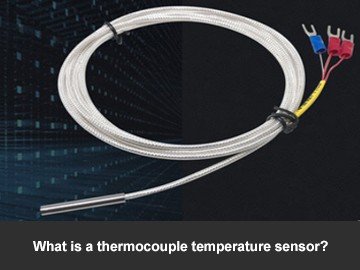What is a thermocouple temperature sensor?
There are a lot of misconceptions about thermocouple temperature sensors. As far as I know, the source of this misunderstanding is the thermal resistance temperature sensor. In many people's subconscious, thermocouple temperature sensors and thermal resistance are the same. In fact, the two physical characteristics of the temperature sensor not only have different names, but also act on the object surface temperature measurement method is not the same.
The measurement principle of the Thermocouple temperature sensors are widely used as passive temperature sensors. By directly measuring the temperature of the object, the temperature signal is converted into a thermoelectric electromotive force signal, which is then converted into the temperature of the measured medium by an electrical instrument (secondary instrument). In addition, the basic principle of thermocouple temperature measurement is based on two different components of the material conductor to form a closed loop, when there is a temperature gradient at both ends, there will be a current in the loop, there will be a thermoelectric emf between the two ends, this is called the seebeck effect. These two different components of the homogeneous conductor is a hot electrode, the temperature of the higher end for the working end, the temperature of the lower end for the free end, the free end is usually at a constant temperature. According to the function relationship between thermoelectric electromotive force and temperature, thermocouple indexing meter is made. The indexing meter is obtained when the free end temperature is at 0℃. Different thermocouples have different indexing meters.
What's more, the thermocouple temperature sensor does not need to be connected to a power supply to work. Anyway, the thermal resistance temperature sensor must be connected to a power supply to work properly.






